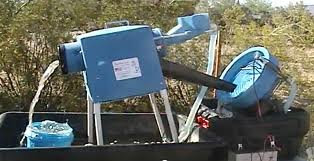The Carolina Slate Belt is a gold-wealthy strip from Virginia, south through North and south Carolina and ends up in Georgia. Numerous rivers and streams in this area contain placer gold deposits. Although most people in the US knew of the gold as a result of the gold rush California, the first gold discovery in the United States in North Carolina was within the Carolina Slate Belt. Gold was first discovered in the United States in 1799 in the Little Meadow Creek in Cabarrus County, North Carolina.
Although this discovery was not as much attention as the discovery California , In fact most of the experienced gold miners who moved to California, during the California Gold Rush had honed their skills mining areas along the Carolina slate belt. After the first gold find some other discoveries in shale and thus more gold mines were developed.
Geology In Carolina Slate Belt
The Carolina Slate Belt majorly composed and derived from rocks that were deposited from volcanic eruption on the surface of the Soil and then sedimentation. The slate is thus characterized by low grade metamorphism that a Large number of rocks is a slaty cleavage here.
Inside Piedmont for the most part consists and often occur from metamorphic intrusive rocks such as various types of gneiss. The whole region Piedmont is underlain at a depth of Approximately 20 km from a region, the seismic waves reflected emphatically.
This area is often regarded as a series of faults along the upper part, including the uncovered portion of Piedmont, moved westward over a number of completely unknown rocks. The error may twist upward toward the west and rise to the top as one of the various thrusts in the Appalachian Mountains.
This area is often regarded as a series of faults along the upper part, including the uncovered portion of Piedmont, moved westward over a number of completely unknown rocks. The error may twist upward toward the west and rise to the top as one of the various thrusts in the Appalachian Mountains.
The slate is made up of low grade metamorphosed volcanic and slate
cleavages. The mountainous Piedmont of North Carolina isolates the
Triassic-Jurassic rift basin and the level Coastal Plain from the hilly
Blue Ridge and Appalachians.
The coastal plain consists of Mesozoic-Cenozoic sediments created when the North Atlantic got to be wider and the Triassic-Jurassic rift basins of sedimentary rocks in the plan during the opening of the Atlantic Ocean formed. The Raleigh Belt and Eastern slate belt containing rocks Love that of Piedmont. However, these are only exposed to the east of the Triassic-Jurassic basins and their connection to the Piedmont is not entirely clear.
The Piedmont can be divided into two parts, the western and eastern areas of both the two very different rock suites. The eastern part is the Carolina Slate Belt, while the western part is often referred to as the interior of Piedmont. A number of geologists often combine the Carolina Slate Belt and Inner Piedmont, what is commonly known as the Carolina Terrane
Two of the most important gold mines in the Carolina Slate Belt included :
Haile gold mine
The mine developed from a gold deposit, which was discovered in 1827 on the farm owned by Benjamin Haile in Eastern Lancaster County near Kershaw, South Carolina. The mined operated until the early 20th century operated when the gold deposits originated. This mine was one of the most productive gold mines during the years.
The Dorn Mine
This is another Large mine in the Carolina Slate Belt. The mine is located in McCormick County, South Carolina. Gold in the mine was first discovered by William soon began Burkhakter Dorn in 1952. The mining at the mine after Dorn and lasted more than 120 years. The slate has several other mines quite a significant amount of gold. In fact, most major gold mines in North and South Carolina Located on the Slate.
This is another Large mine in the Carolina Slate Belt. The mine is located in McCormick County, South Carolina. Gold in the mine was first discovered by William soon began Burkhakter Dorn in 1952. The mining at the mine after Dorn and lasted more than 120 years. The slate has several other mines quite a significant amount of gold. In fact, most major gold mines in North and South Carolina Located on the Slate.
There are numerous other smaller placer mining are found throughout Virginia, North Carolina, South Carolina, and Georgia. All of the gold-bearing areas most rich within these states are found in the slate belt.
Mining has been done in this area for over 200 years, but there are still Nice amounts of gold in the streams and rivers in the Carolina Slate Belt are found.
Mining has been done in this area for over 200 years, but there are still Nice amounts of gold in the streams and rivers in the Carolina Slate Belt are found.
Read Also




















